Co2 Atmosphere

What are some examples of carbon offset projects ?
Carbon offset projects are initiatives designed to reduce or offset the emission of carbon dioxide (CO2) and other greenhouse gases into the atmosphere. These projects aim to mitigate the impacts of climate change by investing in activities that remove CO2 from the atmosphere or prevent its release in the first place. In this guide, we will explore some examples of carbon offset projects and how they contribute to the global effort to combat climate change.
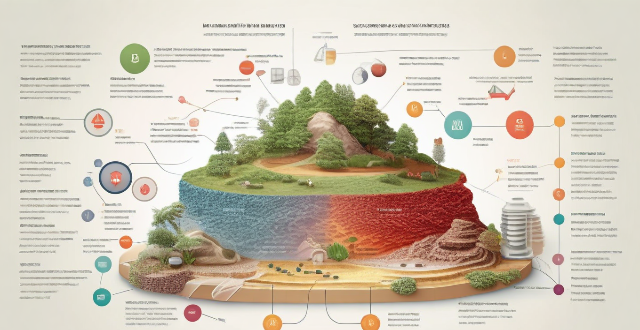
How long will it take for carbon sequestration to have a noticeable effect on atmospheric CO2 levels ?
Carbon sequestration is a process that aims to reduce atmospheric CO2 levels by capturing and storing carbon dioxide. The effectiveness of this process depends on various factors such as the rate of carbon sequestration, global emissions reduction efforts, and the health of natural carbon sinks. In the short term, it is unlikely that carbon sequestration alone will have a noticeable effect on atmospheric CO2 levels. However, in the medium to long term, if significant investments are made in scaling up carbon sequestration technologies and reducing global CO2 emissions, some noticeable effects may begin to emerge. These could include slower rates of CO2 accumulation, improved air quality, reduced global warming, and restoration of natural ecosystems. Therefore, sustained investments in carbon sequestration and other climate mitigation strategies can help achieve long-term reductions in atmospheric CO2 levels and mitigate the effects of climate change.

Is carbon offsetting effective in reducing greenhouse gas emissions ?
Carbon offsetting is a strategy to compensate for CO2 emissions by investing in projects that reduce, avoid, or absorb an equivalent amount of CO2 elsewhere. While it can provide immediate action and support clean projects, there's a lack of standardization and potential for perverse incentives. Effectiveness depends on project quality and organizational integrity. It should be part of a broader strategy, not seen as a silver bullet.

What are some of the most effective methods for carbon sequestration ?
Carbon sequestration refers to the process of capturing and storing carbon dioxide (CO2) from the atmosphere to mitigate its effects on climate change. There are several effective methods for carbon sequestration, including afforestation and reforestation, soil carbon sequestration, biochar production, ocean fertilization, and direct air capture (DAC). Afforestation and reforestation involve planting new trees or replacing existing ones in deforested areas, while soil carbon sequestration involves increasing the amount of organic matter in soil by adding compost, manure, or other organic materials. Biochar production involves creating a type of charcoal made from plant materials that is added to soil to improve its fertility and water-holding capacity. Ocean fertilization involves adding iron or other nutrients to the ocean to stimulate the growth of phytoplankton, which absorb CO2 through photosynthesis. Direct air capture involves using machines to capture CO2 directly from the atmosphere and then store it underground or in other long-term storage solutions.

What role does deforestation play in climate change ?
The Role of Deforestation in Climate Change Deforestation contributes to climate change by reducing the Earth's capacity to absorb CO2 and releasing stored carbon back into the atmosphere. This process exacerbates the greenhouse effect, leading to global warming. Key points include: - Loss of Carbon Sinks: Trees act as natural carbon sinks, capturing and storing CO2. When forests are destroyed, these carbon sinks are lost. - Release of Stored Carbon: Deforestation releases the carbon stored in trees back into the atmosphere, increasing atmospheric CO2 levels. - Biodiversity Loss: Forests are home to a vast array of species. Deforestation leads to habitat destruction and loss of biodiversity. - Soil Erosion and Degradation: Trees help maintain soil quality. Without trees, soil can become degraded, reducing its ability to store carbon. - Albedo Effect: Forests have a darker surface than bare ground, meaning they absorb more sunlight and heat. When forests are replaced with lighter-colored surfaces like grasslands or croplands, the albedo (reflectivity) of the land increases. - Feedback Loops: Deforestation can create feedback loops that exacerbate climate change. For example, as temperatures rise due to increased CO2 levels, it becomes harder for some forests to survive, leading to further deforestation and more CO2 emissions. To combat the role of deforestation in climate change, strategies such as reforestation and afforestation, sustainable forestry practices, protection of intact forests, promotion of agroforestry, and public awareness and education can be employed.

What is the greenhouse effect ?
The greenhouse effect is a natural process that warms the Earth's surface through the trapping of heat by greenhouse gases. These gases include carbon dioxide (CO2), methane (CH4), and nitrous oxide (N2O), which are released by various human activities and natural processes. The greenhouse effect is essential for life on Earth, but human-induced enhancement of this effect has led to global warming and associated environmental issues.

What are some examples of gases that contribute to the greenhouse effect ?
The greenhouse effect is a natural process that warms the Earth's surface. Human activities have increased the concentration of certain gases in the atmosphere, leading to an enhanced greenhouse effect and global warming. Major greenhouse gases include carbon dioxide (CO2), methane (CH4), nitrous oxide (N2O), fluorinated gases, ozone, and water vapor. These gases trap heat in the Earth's atmosphere and contribute to global warming. Reducing emissions of these gases is essential to mitigate climate change and its impacts on ecosystems, societies, and economies worldwide.

Can carbon capture help us achieve our climate goals ?
Carbon capture and storage (CCS) has the potential to mitigate climate change by capturing CO2 emissions from power plants and industrial processes, preventing them from entering the atmosphere. The captured CO2 can be transported to a suitable location for long-term storage or used for enhanced oil recovery. However, CCS technology faces challenges such as high costs, energy losses, and public acceptance issues. While it is not a silver bullet, CCS could play a valuable role in reducing greenhouse gas emissions when integrated with renewable energy strategies and energy efficiency measures.
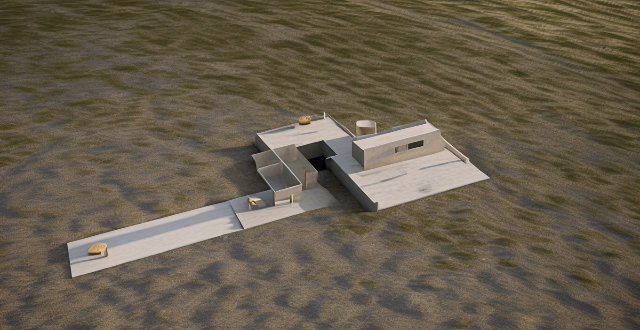
How much carbon dioxide can be sequestered through different methods ?
The amount of carbon dioxide that can be sequestered varies significantly depending on the method and site conditions. Different methods include geological storage, ocean storage, and terrestrial storage, each with different potentials and technical requirements for CO2 sequestration. Geological storage is one of the most promising methods for long-term storage of CO2. It involves injecting and storing CO2 deep underground, typically in saline formations, depleted oil and gas reservoirs, and unmineable coal seams. The potential for CO2 storage in these geological structures is influenced by various factors such as the size, depth, and permeability of the formations, as well as the existence of impermeable cap rock to contain the CO2. Deep saline formations are porous and permeable rocks filled with saltwater that can store CO2 in various forms such as free gas, dissolved in brine, or mineralized after reacting with the host rock. Depleted oil and gas reservoirs offer another option for CO2 storage. After hydrocarbon extraction, these fields have remaining pore space that can be used to inject and store CO2. Unlike saline formations, they often have pre-existing infrastructure for drilling and injection, which can reduce the cost of storage. Unmineable coal seams, also known as coal bed methane (CBM) reservoirs, can store CO2 through a process called enhanced coal bed methane recovery. In this process, injecting CO2 into coal seams displaces methane, which can be recovered as a energy source while sequestering the CO2. Ocean storage involves dissolving CO2 in seawater at great depths where it remains isolated from the atmosphere. This method relies on either natural processes like ocean upwellings or engineering techniques such as direct injection or pipeline delivery systems. While the exact storage capacity is difficult to estimate due to complex ocean dynamics, studies suggest that the global ocean could theoretically absorb thousands of gigatons of CO2. Terrestrial storage focuses on enhancing the natural processes by which ecosystems capture and store carbon. This includes reforestation, afforestation, and soil management practices that increase carbon stocks in vegetation and soils. The potential for terrestrial storage is significant but varies widely depending on factors like climate, soil type, and land use practices. Globally, it is estimated that forests alone could potentially sequester hundreds of gigatons of CO2 over several decades.

What is carbon capture and how does it work ?
Carbon capture, a technology to reduce CO2 emissions from industrial processes and power generation facilities, comprises three main types: post-combustion, oxy-fuel combustion, and pre-combustion. Each method captures CO2 differently, and the captured gas can be stored or used for other purposes. Carbon capture offers benefits such as reducing greenhouse gas emissions and supporting the transition to a low-carbon economy but faces challenges like high costs and energy requirements.

What is the atmosphere like at an idol concert ?
Attending an idol concert is an experience that is often filled with excitement, energy, and a sense of community. The atmosphere at these events varies depending on the artist, venue, and fans in attendance, but there are some common elements that make up the overall vibe. These include electric energy, high-octane performances, lighting and visual effects, fan interaction through call-and-response segments and fanchants, as well as a strong sense of community spirit among attendees. Many fans also choose to express their love for their favorite idol by dressing up as them or wearing clothes inspired by their style. Overall, attending an idol concert is an immersive experience that celebrates the power of music and the bond between artists and their fans.

What is carbon sequestration and how does it work ?
Carbon sequestration is a process that aims to reduce the concentration of carbon dioxide (CO2) in the atmosphere by capturing and storing it. This can be achieved through various methods, including afforestation, soil carbon sequestration, bioenergy with carbon capture and storage (BECCS), direct air capture (DAC), ocean carbon sequestration, and enhanced weathering. The benefits of carbon sequestration include mitigating climate change, improving soil health, restoring ecosystems, and creating economic opportunities. However, large-scale implementation of carbon sequestration projects faces challenges, and continued research and investment are necessary to achieve global climate goals.

What are the primary sources of greenhouse gas emissions ?
Greenhouse gas emissions are a major contributor to global warming and climate change, with the primary sources being fossil fuels, deforestation, industrial processes, and agriculture. Fossil fuels release carbon dioxide into the atmosphere when burned, while deforestation releases stored carbon from trees. Industrial processes often use fossil fuels or other materials that produce CO2 and other greenhouse gases like methane and nitrous oxide. Agriculture also contributes to emissions through livestock farming, fertilizer use, and changes in land use leading to deforestation and soil degradation.

Are diesel hybrid vehicles better for the environment than regular diesel vehicles ?
Diesel hybrid vehicles, which combine a diesel engine with an electric motor, have the potential to be more environmentally friendly than regular diesel vehicles. They can offer improved fuel economy and reduced emissions of CO2 and particulate matter. However, the production of batteries for hybrid vehicles can result in higher upstream CO2 emissions, and advanced emission control systems are needed to significantly reduce NOx emissions. A comprehensive lifecycle analysis that takes into account all factors would provide a clearer picture of the environmental benefits of diesel hybrid vehicles compared to regular diesel vehicles.

How does carbon sequestration relate to other climate change mitigation strategies ?
Carbon sequestration is a crucial strategy in the fight against climate change. It involves the capture and storage of carbon dioxide (CO2) from the atmosphere, preventing it from contributing to global warming. This process can be natural or artificial, and it plays a significant role in reducing greenhouse gas emissions. Natural carbon sequestration occurs through processes such as photosynthesis, where plants absorb CO2 from the atmosphere and convert it into organic compounds. This process helps to remove CO2 from the atmosphere and store it in plant tissues, which can eventually become part of the soil when the plants die and decompose. Examples of natural carbon sequestration include forests, oceans, and wetlands. Artificial carbon sequestration involves human intervention to capture and store CO2. This can be done through various methods, including direct air capture, carbon capture and storage (CCS), and enhanced rock weathering. Examples of artificial carbon sequestration include direct air capture technology, CCS systems, and enhanced rock weathering techniques. Carbon sequestration is just one piece of the puzzle when it comes to mitigating climate change. Other strategies include reducing greenhouse gas emissions, increasing energy efficiency, and transitioning to renewable energy sources. Reducing greenhouse gas emissions is essential for slowing down the rate of climate change. This can be achieved through various means, such as using energy-efficient technologies, promoting public transportation, and implementing policies that encourage sustainable practices. Increasing energy efficiency helps to reduce the amount of energy needed to power our homes, businesses, and transportation systems. This can be done by upgrading buildings with better insulation, using more efficient appliances, and improving industrial processes. Transitioning to renewable energy sources, such as solar, wind, and hydroelectric power, is crucial for reducing our dependence on fossil fuels and decreasing greenhouse gas emissions. Governments and individuals can support this transition by investing in renewable energy infrastructure and adopting sustainable practices in their daily lives.

How do greenhouse gas emissions contribute to ocean acidification ?
The article discusses the role of greenhouse gas emissions, particularly carbon dioxide (CO2), in causing ocean acidification. It explains how CO2 gets absorbed by seawater through a process called "carbon sequestration," which leads to changes in the chemistry of the ocean's surface waters and results in decreased pH levels. The article also highlights the negative impacts of ocean acidification on marine ecosystems, including damage to calcifying organisms and disruption of food webs. To mitigate these effects, it suggests reducing greenhouse gas emissions through various means such as transitioning to renewable energy sources, improving energy efficiency, promoting sustainable land use practices, and implementing carbon capture and storage technologies.

How does deforestation affect global emission levels and what can be done about it ?
Deforestation significantly contributes to global emission levels, primarily through the release of carbon dioxide (CO2) and other greenhouse gases. When trees are cut down or burned, the carbon they have absorbed from the atmosphere during their lifetime is released back into the air. This process exacerbates climate change by increasing the concentration of atmospheric CO2 and other greenhouse gases, which trap heat in the Earth's atmosphere. To mitigate the effects of deforestation on global emissions, various strategies can be implemented, including reforestation, sustainable forest management, reducing demand for forest products, promoting eco-friendly alternatives, strengthening laws and policies, and raising public awareness about the importance of forests in mitigating climate change. By taking these steps, it is possible to reduce the contribution of deforestation to global emissions and work towards a healthier planet.
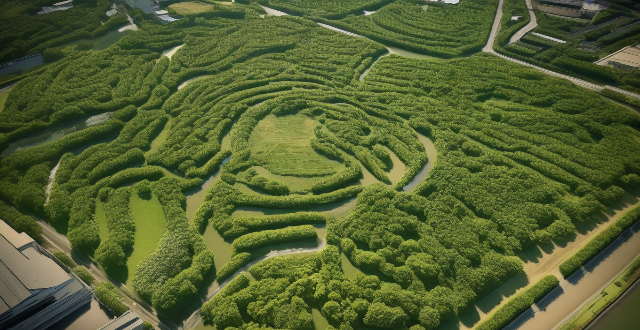
What are the primary causes of global warming ?
The primary causes of global warming include the increase in greenhouse gases, especially carbon dioxide, due to activities like burning fossil fuels and deforestation. Industrial processes, agricultural practices, land use changes, poor waste management, population growth, and urbanization also contribute significantly. Natural factors such as volcanic eruptions and solar radiation variations play a minor role compared to human activities.

Is carbon sequestration a viable solution to combat climate change ?
Carbon sequestration can help reduce atmospheric CO2 levels and support renewable energy sources, but it faces technical feasibility, economic costs, storage capacity, and potential risks. It should be part of a comprehensive strategy to combat climate change.

What role do trees play in natural carbon sequestration ?
The text discusses the role of trees in natural carbon sequestration, a process that involves the removal and storage of carbon dioxide from the atmosphere. Trees absorb CO2 through photosynthesis and store it in their biomass, contributing to soil organic matter and acting as carbon sinks. Responsible forest management practices and preservation of existing forests are essential for maximizing the potential of these ecosystems for carbon sequestration and mitigating climate change.
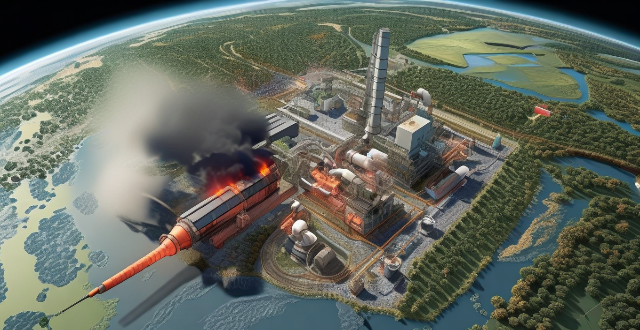
How do greenhouse gas emissions contribute to global warming ?
Greenhouse gas emissions, primarily carbon dioxide (Greenhouse gas emissions, primarily carbon dioxide (e (CH4), nitrous oxide (N2O), and fluorinated gases, play a crucial role in the phenomenon of global warming. These gases trap heat within the Earth's atmosphere, leading to an increase in the planet's average temperature. The greenhouse effect is a natural process where certain gases in the Earth's atmosphere trap energy from the Sun. However, excessive amounts of greenhouse gases due to human activities are causing this natural process to become unbalanced, resulting in global warming. The primary sources of these emissions include fossil fuel burning, deforestation, industrial processes, agriculture, and waste management. The increase in greenhouse gas concentrations leads to more heat being trapped within the Earth's atmosphere, causing a range of environmental impacts including melting ice caps and glaciers, extreme weather events, ocean acidification, and habitat loss. To combat the effects of greenhouse gas emissions and global warming, various strategies are being implemented, including renewable energy, energy efficiency, carbon capture and storage, reforestation, and sustainable agriculture.
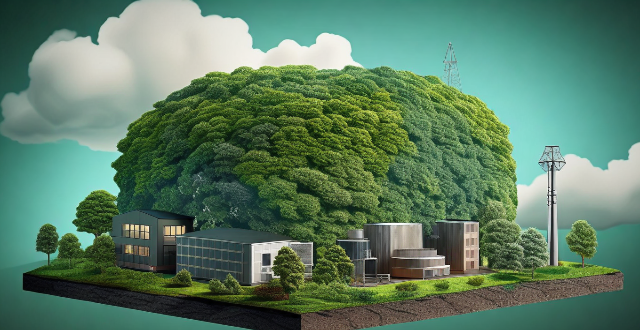
Can the greenhouse effect be reversed ?
The greenhouse effect is essential for life on Earth, but human activities have increased its intensity, leading to global warming. Strategies to reverse this enhanced effect include reducing emissions through renewable energy and energy efficiency, reforestation, carbon capture and storage, and negative emissions technologies like direct air capture. However, challenges such as technical feasibility, political will, economic impact, and environmental trade-offs must be considered. While a complete reversal may not be fully achievable in the short term, significant progress can be made with concerted global efforts.

How does deforestation contribute to both climate change and biodiversity loss ?
The text discusses the impact of deforestation on climate change and biodiversity loss. It explains how trees act as carbon sinks, absorbing CO2 from the atmosphere during photosynthesis, but when forests are cleared, this process is halted, and the stored carbon is released back into the atmosphere as CO2. Deforestation also involves burning trees, which releases other greenhouse gases like methane and nitrous oxide, contributing to global warming. The text further explains how forests provide habitat for countless species of animals, insects, and plants, but clearing forests destroys these habitats, leading to a loss of biodiversity. Even partial deforestation can fragment habitats, isolating populations and reducing genetic diversity. Without tree roots to hold soil together, erosion increases, affecting water quality and availability, which can further impact species that depend on specific water sources or soil types. The text concludes that deforestation is a complex issue with far-reaching consequences for both climate change and biodiversity loss, requiring a multifaceted approach that considers both environmental protection and human needs.
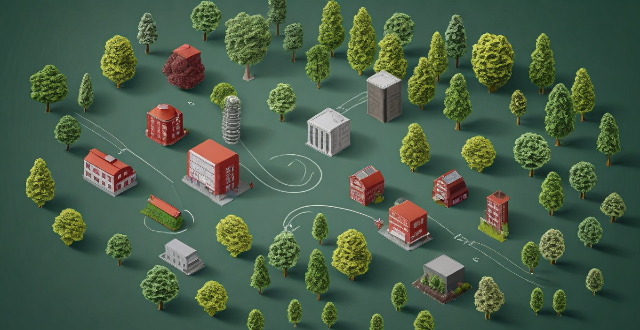
What is carbon capture technology and how does it work ?
Carbon capture technology is a set of methods aimed at reducing CO2 emissions from power plants, industrial processes, and other sources. The main types are post-combustion capture, oxy-fuel combustion, and pre-combustion capture, each with its specific techniques and challenges. While these technologies offer significant potential in the fight against climate change, they face economic and logistical barriers such as high costs and the need for safe storage solutions. Ongoing research seeks to improve efficiency and reduce costs, making carbon capture an increasingly viable solution in achieving net-zero emissions targets.

What is the relationship between forest health and the global carbon cycle ?
The text discusses the relationship between forest health and the global carbon cycle. It highlights the importance of forests in absorbing carbon dioxide from the atmosphere and storing it in their biomass, which helps to mitigate the effects of climate change. Deforestation, or the clearing of forests for agricultural or urban development purposes, has a significant impact on the global carbon cycle by releasing carbon stored in trees back into the atmosphere as CO2. Healthy forests are more effective at sequestering carbon than degraded or damaged forests. Several strategies can be implemented to maintain the health of forests, including protecting existing forests, restoring degraded forests, promoting sustainable forestry practices, reducing emissions from deforestation and forest degradation, and increasing public awareness.
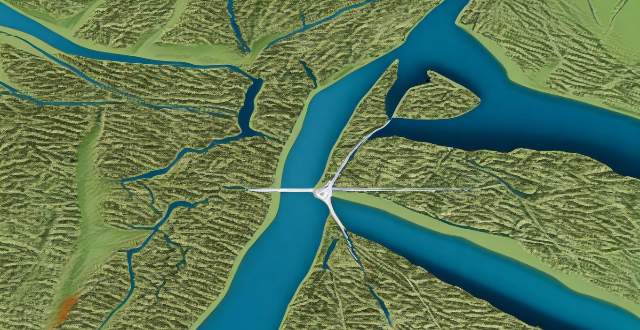
What are some examples of geoengineering techniques ?
Geoengineering techniques aim to counteract climate change through large-scale interventions in the Earth's climate system. These techniques include solar radiation management (SRM) methods like stratospheric aerosol injection and space sunshades, as well as carbon dioxide removal (CDR) strategies such as direct air capture (DAC), ocean fertilization, bioenergy with carbon capture and storage (BECCS), enhanced weathering, forestation and reforestation, and soil carbon sequestration. Other techniques involve albedo modification on Earth and atmospheric aerosol spraying. Despite their potential, these methods pose significant risks and uncertainties, necessitating further research before widespread use.

How do greenhouse gases contribute to climate change ?
This text explains the role of greenhouse gases in climate change and how human activities contribute to excessive levels of these gases. It outlines various sources of greenhouse gases such as fossil fuel combustion, deforestation, agriculture, industrial processes, and waste management. The impacts of increased greenhouse gases on the environment are discussed, including global warming, sea level rise, extreme weather events, ocean acidification, and biodiversity loss. Finally, the text suggests strategies for mitigating greenhouse gas emissions, such as reducing fossil fuel use, enhancing energy efficiency, promoting renewable fuels, reforestation, sustainable agriculture practices, carbon capture, and policy initiatives.

What are the most family-friendly island resorts ?
When it comes to choosing a family-friendly island resort, there are several factors to consider, including the availability of activities for children, the quality of accommodations, the safety of the surroundings, and the overall atmosphere of the resort. Here are some of the most family-friendly island resorts that you may want to consider: 1. **Atlantis Paradise Island, Bahamas** offers a wide range of activities for children, spacious rooms and suites, a 24-hour security system, and a lively and vibrant atmosphere. 2. **Disney's Aulani Resort & Spa, Hawaii** offers a variety of activities for children, spacious rooms and suites, a 24-hour security system, and a relaxed and laid-back atmosphere. 3. **Club Med Turkoise, Turks & Caicos** offers a wide range of activities for children, spacious rooms and suites, a 24-hour security system, and a fun and lively atmosphere. 4. **Beaches Negril, Jamaica** offers a wide range of activities for children, spacious rooms and suites, a 24-hour security system, and a relaxed and laid-back atmosphere. 5. **Four Seasons Resort Maui at Wailea, Hawaii** offers a variety of activities for children, spacious rooms and suites, a 24-hour security system, and a luxurious and tranquil atmosphere.
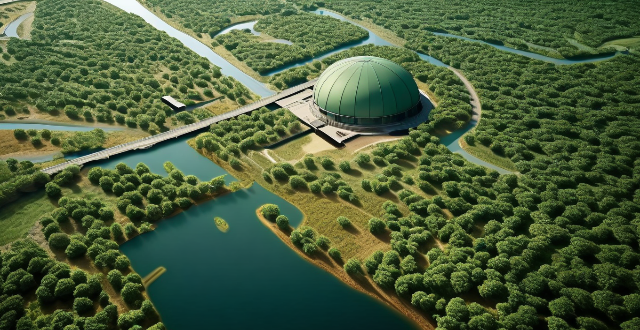
What causes global warming ?
Global warming is primarily caused by the release of greenhouse gases into the Earth's atmosphere, leading to an increase in the planet's average temperature. The main sources of these gases include burning fossil fuels, deforestation, industrial processes, agriculture, transportation, and waste. To mitigate global warming, it is essential to reduce the emissions of these greenhouse gases through various measures such as switching to renewable energy sources, improving energy efficiency, implementing carbon capture and storage technologies, promoting reforestation and sustainable land use practices, encouraging the development and adoption of low-carbon technologies, and supporting policies that reduce emissions.